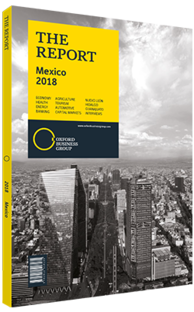Pension funds remain a critical component of Mexico's capital markets
Since reforms in the 1990s, pension funds have become a key investor in the country’s growth. Their presence has expanded from traditional investment vehicles, such as sovereign debt, to more sophisticated products that have brought variety to Mexico’s capital markets and channelled financing to infrastructure projects. Pension funds account for 15% of GDP, according to March 2018 figures by the Mexican Association of Pension Fund Administrators ( Asociación Mexicana de Administradoras de Fondos para el Retiro, AMAFORE), and their weight in the economy is expected to reach 30% of GDP by 2025. However, stakeholders argue that more flexible legislation is needed to fully tap their investment potential.
System Switch
Before the late 1990s private sector pensions were handled by the Mexican Institute for Social Security, but scarce resources and mismanagement left the government pension overseer close to insolvency. In 1997, with the enactment of the Social Security Law, Mexico moved away from a traditional defined-benefits system under state control, and pensions began to be managed by pension fund administrators (administradoras de fondos para el retiro, AFORES), opening the way for private players. The money AFORES raise is invested by firms specialising in pension fund growth.
In general, these pension funds have maintained a strong performance, with assets under management rising at an annual rate of 14% over the past decade. This growth has taken place on two fronts: roughly 8% of annual increases have originated from contributions, while 6% can be attributed to returns on investments. Mexico’s young population has helped expand the resource base of AFORES, with the age of pension fund contributors averaging 36.
Legacy Regulations
The environment following the 1994-95 financial crisis was one in which many middle-class Mexicans faced poverty, leading to the establishment of very strict investment guidelines for pension funds when AFORES were formed, according to Octavio Ballinas García, investment and risk director at AMAFORE. These restrictions left funds with few investment options besides short-term government debt. The development of new financial instruments over the past 15 years, however, has opened more doors for investment funds. Today, 50% of pension assets are made up of sovereign debt, 22% is invested in variable-income products like stocks, 19% in corporate bonds, 8% in structured instruments like real estate investment trusts and development capital certificates, and 1% in foreign investments, according to AMAFORE. AFORES cannot invest more than 20% of their portfolios abroad.
Liberalisation
Despite the diversification engendered by new investment products, market observers have long called for an easing of AFORES’ investment caps, which would allow funds to improve their returns. As of mid-2018 it appears likely that this liberalisation will take place over the medium term.
However, looser restrictions on the investments that pension funds can make worries some of the regulating bodies in charge of maintaining the stability of the country’s financial environment, given the continuing importance of AFORES as institutional investors. Despite increased volatility felt since the 2008 global financial crisis, compounded in 2017 by the lack of visibility of Mexico’s trade relationship with the US (see Economy chapter), rates on the country’s long-term debt have not risen. This is due in no small part to consistent demand for long-term bonds from pension funds. Though AFORES play an integral role in financial system stability, some stakeholders suggest these fears may be overblown. “I believe that if the rules were softened, there would be some transfer of local value to foreign investments, but there would not be capital flight,” Ballinas García told OBG. “AFORES should rethink their investment strategies, but this could take some time.”
You have reached the limit of premium articles you can view for free.
Choose from the options below to purchase print or digital editions of our Reports. You can also purchase a website subscription giving you unlimited access to all of our Reports online for 12 months.
If you have already purchased this Report or have a website subscription, please login to continue.

